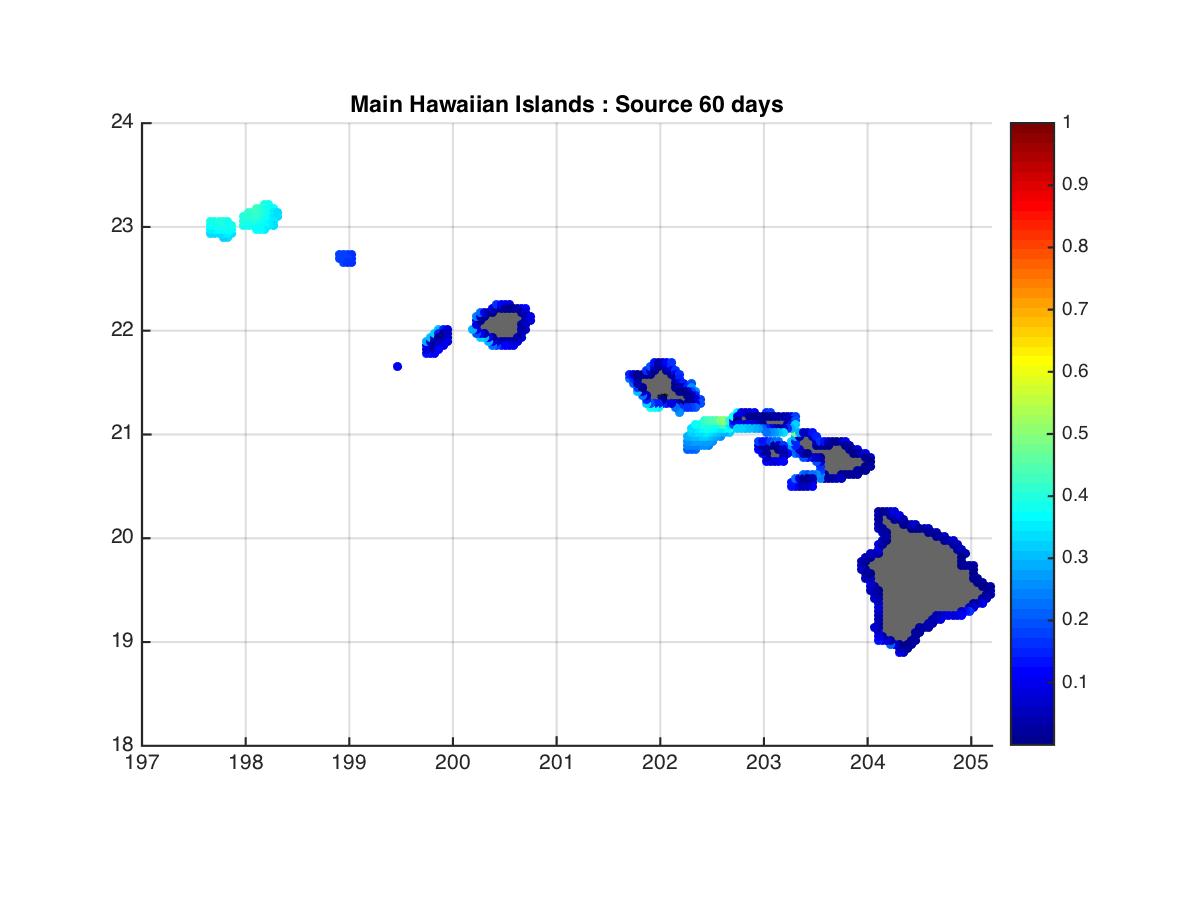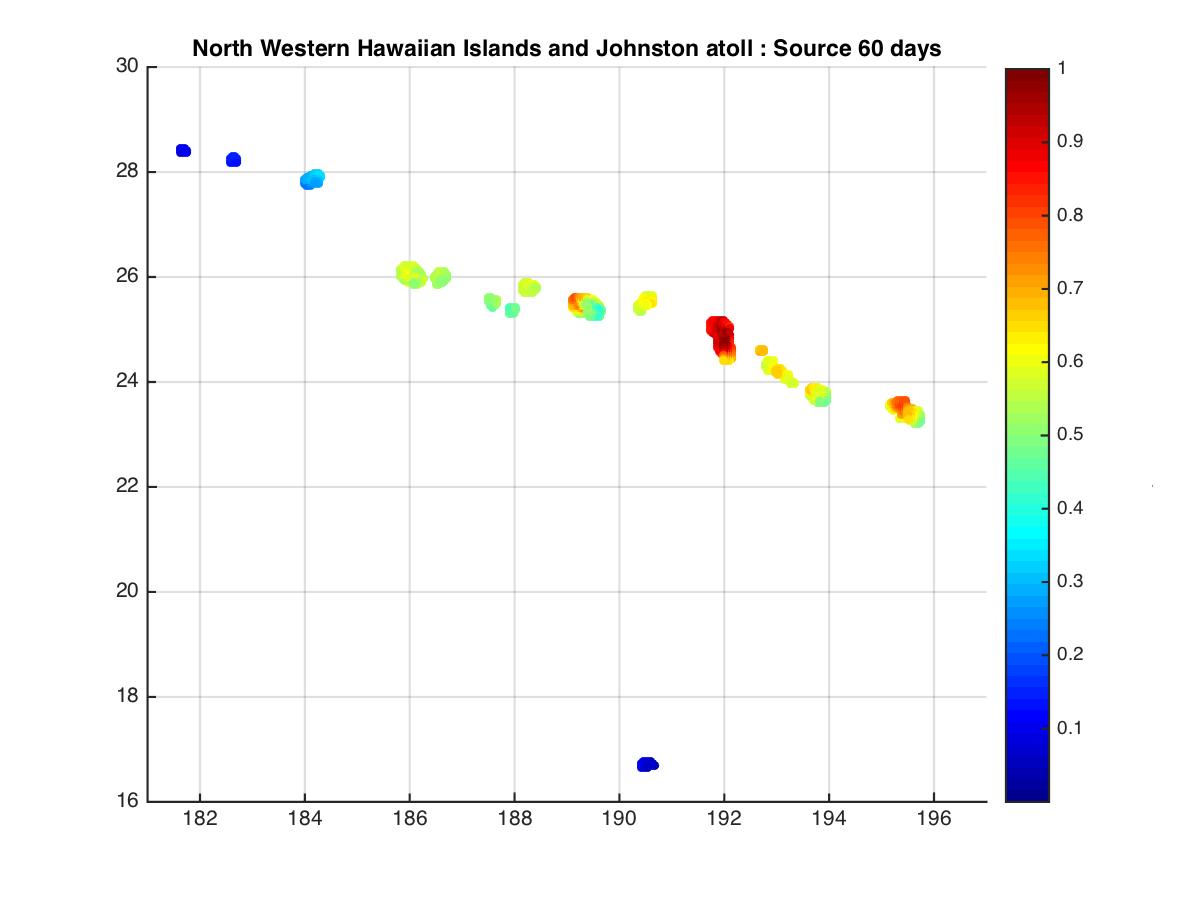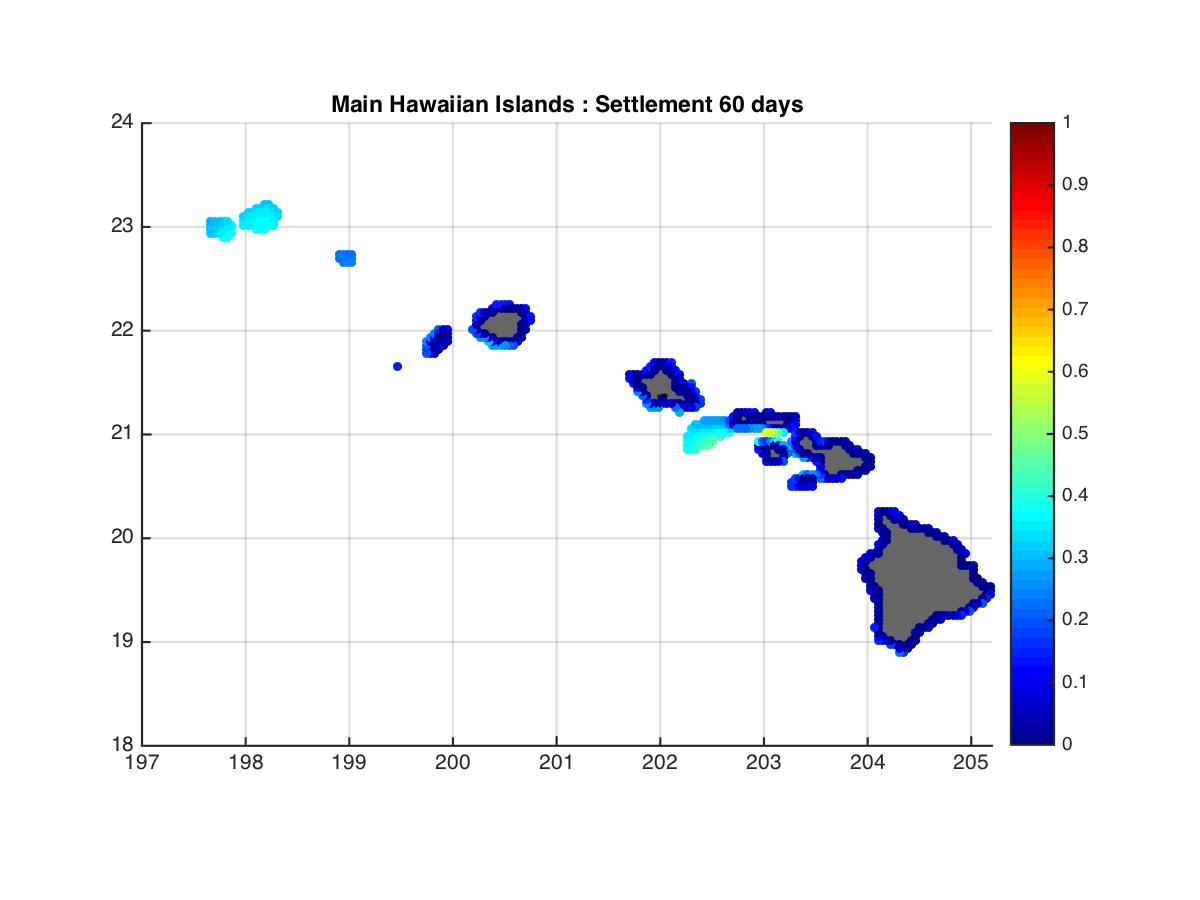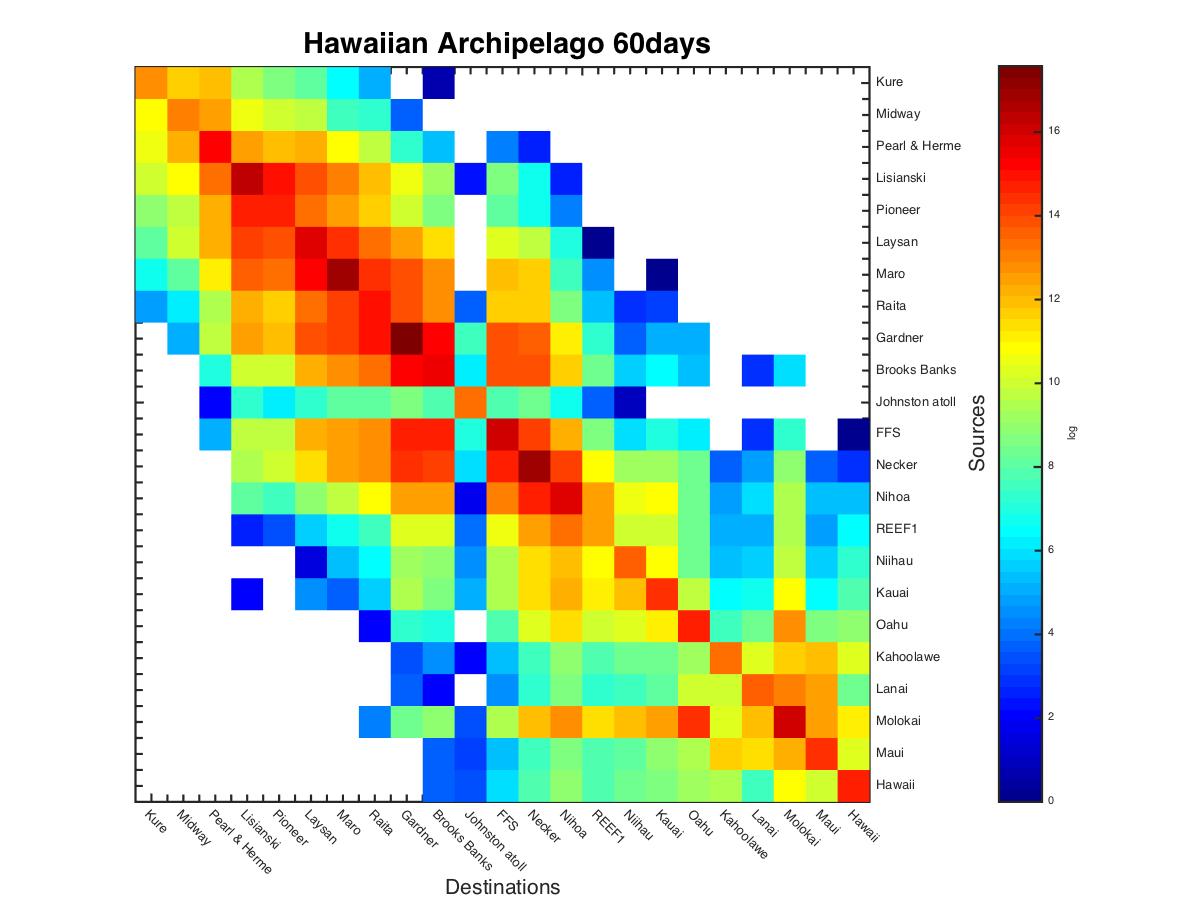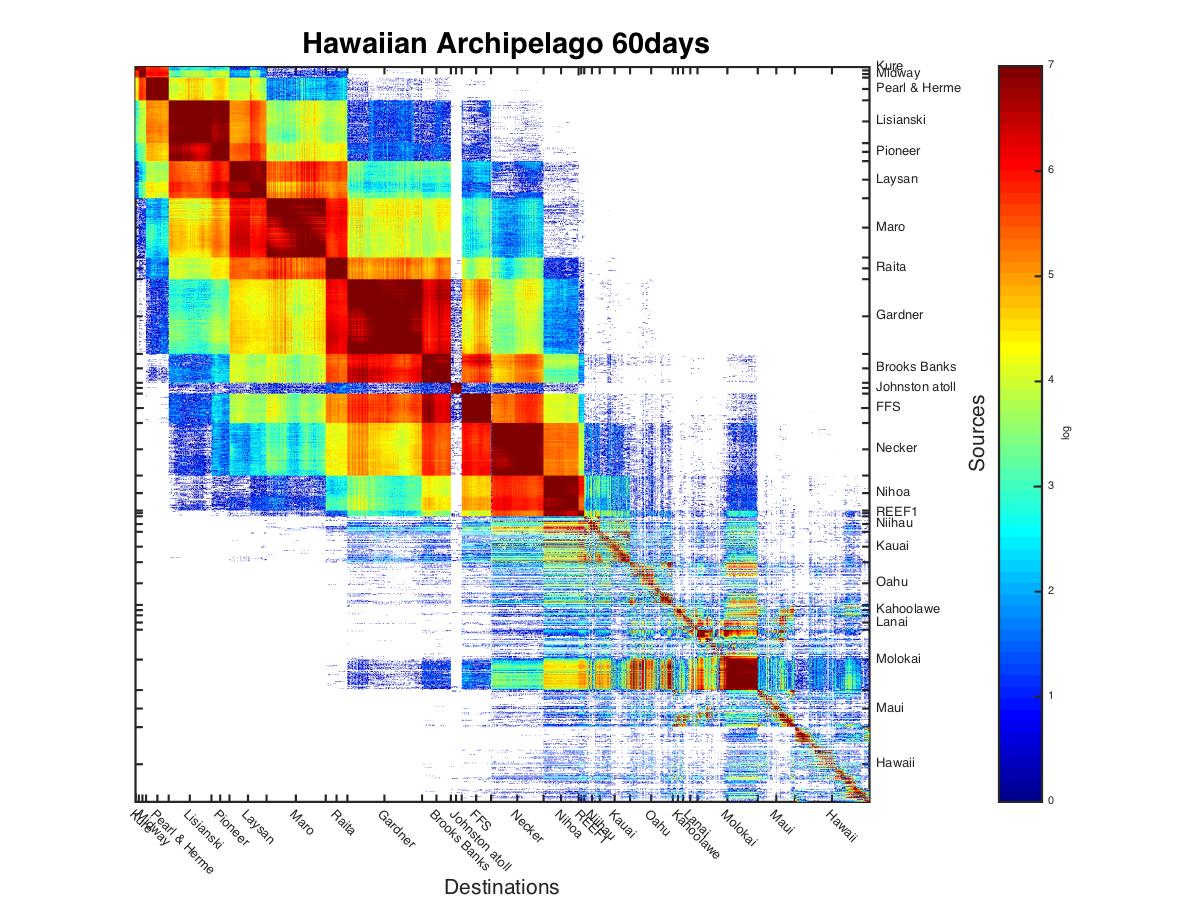(Version 1.0, experimental product, released June 2016)
Click on buttons to select:
| : | ||
| : |
Relative connectivity importance (source and destination)
| NWHI and Johnston Atoll | Main Hawaiian Islands |
Connectivity matrix (all locations)
| Reef locations (0.04°) | By island/atoll |
Click on buttons to select:
| : | ||
| : |
| : | Reef cell level (469Mb) Island/atoll level (158Kb) | |
| : | Reef cell level (469Mb) Island/atoll level (158Kb) |
Connectivity Product Description
Potential connectivity among coral reefs in the Hawaiian archipelago is determined by tracking simulated larval releases from each reef location. Modeled ocean currents were extracted from the HYbrid Coordinate Ocean Model (HYCOM) global output. Particle tracking was performed using the Conn4D biophysical dispersal model1. Additional parameters to the simulation modeling included bathymetry (GEBCO 2014) and reef locations data (Shallow Water Benthic Habitat and Millennium Coral Reef Mapping). Particle release timing was determined based on published studies2; i.e., coral spawning in Hawai'i typically peaks during the late spring to summer months; however, some species spawn during winter (e.g., Tubastrea coccinea), while others produce larvae year-round (e.g., Pocillopora damicornis). For 1,430 coral reef locations across the archipelago, product maps show the relative importance of each as a larval source and/or as a destination, at 0.04° resolution. Connectivity matrices reveal the link between each reef pair, and the strength of links is summarized for islands/atolls.
Connectivity among coral reefs has been identified as a critically important factor in resilience, specifically in regard to recovery from disturbance. NOAA Coral Reef Watch has developed maps identifying the level of importance of specific reefs in Hawai'i and Florida for potential re-seeding of other reefs following disturbance. These Connectivity tools directly contribute to new and ongoing resilience assessments and planning of Marine Protected Areas (MPAs), MPA networks, and other conservation strategies.
1Kool JT, Paris CB, Andréfouët S, Cowen RK (2010) Complex migration and the development of genetic structure in subdivided populations: an example from Caribbean coral reef ecosystems. Ecography 33: 597-606.
2Summarized by Kolinski SP, Cox EF (2003) An update on modes and timing of gamete and planula release in Hawaiian Scleractinian corals with implications for conservation and management. Pacific Science 57: 17-27.
